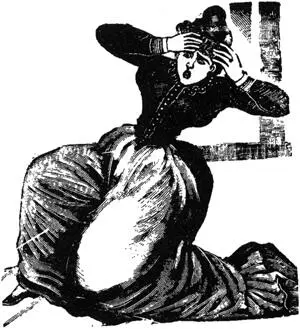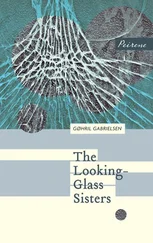Who are the jailers and who the jailed? In one way or another we’re all imprisoned, those in jail and those of us outside. How can the prisoners of need be free, since they live to work and can’t afford the luxury of working to live? And the prisoners of desperation, who have no work and never will and who survive only by robbery or by miracle? What about the prisoners of fear, are we free? Aren’t we all prisoners of fear, those on top, on the bottom, and in the middle, too? In societies obliged to live by everyone-for-himself, we’re all prisoners, the guarded and the guards, the chosen and the pariahs. The Argentine cartoonist Nik drew a reporter interviewing a man gripping the bars of a window in his house:
“We’ve all installed bars, TV cameras, floodlights, double locks, and tinted glass.…”
“Don’t your relatives come over?”
“Yes, I have visiting hours.”
“And what do the police say?”
“If I keep up my good behavior, Sunday morning I can go out to the bakery.”
I’ve seen bars on shantytown hovels made of scrap wood and tin, poor people defending themselves from other poor people. Urban development metastasizes inequality: in the suburbs, hovels and gardens spring up side by side. Rich suburbs tend to be not too far from the shantytowns that supply them with maids, gardeners, and watchmen. In places of despair, those who eat only now and then lie in wait. In places of privilege, the rich live under house arrest. On a private block in San Isidro in Buenos Aires, the man delivering newspapers jokes, “Live here? No thanks. If I have nothing to hide, why would I?”

Helicopters cross the skies above the city of São Paulo, coming and going between luxury prison homes and downtown rooftops. The streets, kidnapped by thugs and poisoned by pollution, are a trap to be avoided. Fugitives from violence and smog, the rich are obliged to live in hiding. Paradoxes of exhibitionism: opulence is concealed behind ever-higher walls in houses without faces, invisible to the envy and covetousness of everyone else. Microcities rise up on the edges of the great cities. There mansions huddle, protected by complex electronic security systems and armed guards who patrol their borders. Just as malls are like the cathedrals of other times, these castles of our days have watchtowers, cressets, and embrasures to spy the enemy and keep him at bay. On the other hand, they have neither the magnificence nor the beauty of those old stone fortresses.
Family Chronicle
Nicolás Escobar’s aunt died in her sleep, peacefully, at home in Asunción, Paraguay. Nicolás was six and had already logged thousands of hours of television when he learned that he had lost his beloved elderly relative. He asked, “Who killed her?”
The captives of fear don’t realize they are prisoners. But the prisoners of the penal system, who wear numbers on their chests, have lost both their freedom and the right to delude themselves. The most modern jails, the latest thing in fashion, tend to be maximum-security prisons. No one suggests returning criminals to society, saving those who have lost their way, as it was once so quaintly put. Nowadays, the only desire is to shut them away forever, and no one bothers to preach lies. Justice blindfolds herself to keep from seeing where a criminal comes from or why he committed a crime, which ought to be the first step toward his possible rehabilitation. The model fin-de-siècle jail is not the least concerned with redemption or even with teaching a lesson. Society locks up public menaces, then throws away the key.
In some new prisons in the United States, the cell walls are steel and windowless; the doors open and close electronically. The U.S. penitentiary system is generous only when it hands out televisions, for their narcotic effect, and a growing number of prisoners have little or no contact with other prisoners. A prisoner might see a guard once in a while, but even guards are growing scarce. Today’s technology allows a single employee in a control room to keep watch over a hundred prisoners. Machines take care of everything.
Those under house arrest have also been controlled by electronic means, ever since a judge named Love, Jack Love, invented a lovely remote-control bracelet. Attached to the criminal’s wrist or ankle, it keeps track of his movements and knows if he’s trying to take it off, or if he drinks alcohol, or if he leaves the house. At this rate, predicts criminologist Nils Christie, trials will soon be held by video with the accused never seen in person by the prosecutor, the defense attorney, or the judge.
In 1997, there were 1.8 million prisoners in U.S. jails, more than double the number ten years earlier. But that figure would triple if it encompassed those under house arrest, out on bail, or on parole. That total would include five times as many black prisoners as all those imprisoned under apartheid at its height, a number equal to the entire population of Denmark. This gigantic clientele, tempting for any investor, has encouraged privatization. Private jails continue to sprout in the United States, even though they’ve shown themselves to be purveyors of horrible food and poor treatment — eloquent proof that for the taxpayer private jails are no cheaper than public ones, since their huge profits far outweigh their low costs.
Back in the seventeenth century, English jailers bribed judges to get more prisoners. When their sentences were up, prisoners were so deep in debt that they had to work for their jailers, often as beggars, for the rest of their lives. At the end of the twentieth century, a private U.S. prison company, Corrections Corporation of America, was one of the five highest-priced companies on the New York Stock Exchange. Founded in 1983 with capital from Kentucky Fried Chicken, the company made it clear from the start that it intended to sell jails like chicken dinners. By the end of 1997, the value of its stock had multiplied seventy times, and the company had set up prisons in England, Australia, and Puerto Rico. But the domestic market is the meat and potatoes of its business. In the United States, where prisoners are always plentiful, jails are hotels that never have a vacancy. In 1992, over a hundred companies were designing, building, or administering prisons.
In 1996, World Research Group sponsored a conference on how to maximize the profits of this dynamic industry. The invitation read: “While arrests and convictions are on the rise, profits are to be made — profits from crime.” The fact is that the incidence of crime in the United States has been falling in recent years, but the market still serves up ever more prisoners. He who is not jailed for what he has done is jailed for what he might do. There’s no reason why falling crime statistics should disturb the brilliant growth of this enterprise. Besides, as executive Diane McClure assured investors in October 1997, “Our market analysis shows that juvenile crime will continue growing.”
In an interview at the beginning of 1998, novelist Toni Morrison pointed out that “the brutal treatment of prisoners in private jails has grown so scandalous that even Texans are concerned. Texas, a place not known for its big heart, is rescinding contracts.” But the prisoners, the unfree, must serve the free market. They don’t deserve better treatment than any other commodity. The National Criminal Justice Commission estimates that at the current rate of change in the prison population, by the year 2020 six out of every ten black men will be behind bars. Over the past twenty years, public spending on prisons has grown by 900 percent. That hasn’t alleviated public fears one bit, but it has done lots for the health of the prison industry.
Читать дальше












